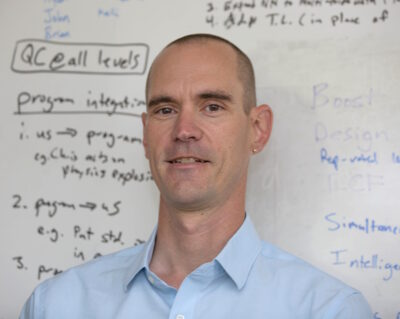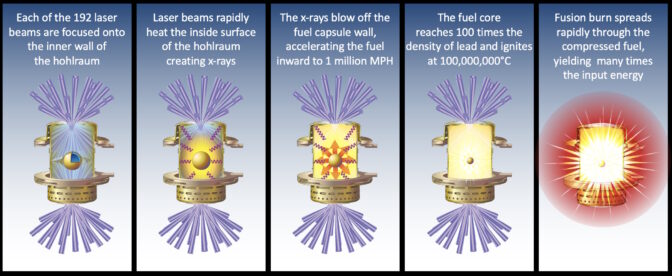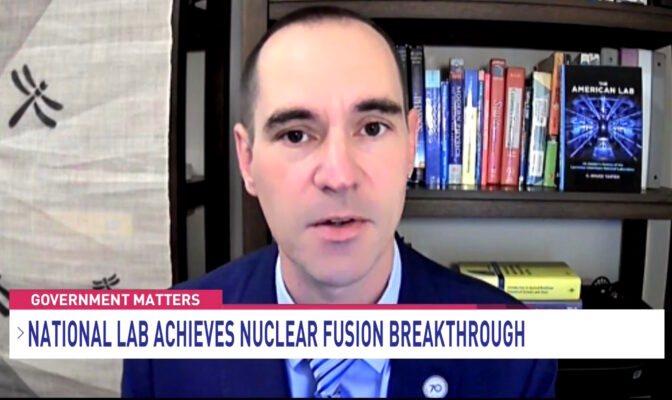Graphic Cards
Fusion Reaction: How AI, HPC Are Energizing Science
Brian Spears says his youngsters will get pleasure from a extra sustainable planet, thanks partially to AI and excessive efficiency computing (HPC) simulations.
“I imagine I’ll see fusion vitality in my lifetime, and I’m assured my daughters will see a fusion-powered world,” stated the 45-year-old principal investigator at Lawrence Livermore Nationwide Laboratory who helped show the physics of the clear and ample energy supply, making headlines worldwide.
Outcomes from the experiment hit Spears’ inbox at 5:30 a.m. on Dec. 5 final yr.
“I needed to rub my eyes to verify I wasn’t misreading the numbers,” he recalled.
A Nuclear Household
As soon as he assured himself, he scurried downstairs to share the information together with his spouse, a chemical engineer on the lab who’s pioneering methods to 3D print glass, and likewise as soon as labored on the fusion program.

“One in all my associates described us as a Star Trek family — I work on the warp core and she or he works on the replicator,” he quipped.
In a tweet storm after the lab formally introduced the information, Spears shared his pleasure with the world.
“Exhausted by an incredible day … Daughters sending me screenshots with breaking information about Mother and Dad’s work … Being part of one thing superb for humanity.”
In another tweet, he shared the technical particulars.
“Used two million joules of laser vitality to crush a capsule 100x smoother than a mirror. It imploded to half the thickness of a hair. For 100 trillionths of a second, we produced ten petawatts of energy. It was the brightest factor within the photo voltaic system.”
AI Helps Name the Pictures
Per week earlier than the experiment, Spears’ group analyzed its precision HPC design, then predicted the consequence with AI. Two atoms would fuse into one, releasing vitality in a course of merely referred to as ignition.
It was probably the most thrilling of 1000’s of AI predictions in what’s change into the two-step dance of recent science. Groups design experiments in HPC simulations, then use knowledge from the precise outcomes to coach AI fashions that refine the subsequent simulation.
AI uncovers particulars in regards to the experiments exhausting for people to see. For instance, it tracked the affect of minute imperfections within the imploding capsule researchers blasted with 192 lasers to realize fusion.

“You want AI to know the whole image,” Spears stated.
It’s a giant canvas, crammed with math describing the complicated particulars of atomic physics.
A single experiment can require tons of of 1000’s of comparatively small simulations. Every takes a half day on a single node of a supercomputer.
The most important 3D simulations — referred to as the kitchen sinks — eat about half of Sierra, the world’s sixth quickest HPC system, packing 17,280 NVIDIA GPUs.
Edge AI Guides Experiments
AI additionally helps scientists create self-driving experiments. Neural networks could make split-second selections about which technique to take an experiment based mostly on outcomes they course of in actual time.
For instance, Spears, his colleagues and NVIDIA collaborated on an AI-guided experiment final yr that fired lasers as much as 3 times a second. It created the type of proton beams that would sometime deal with a most cancers affected person.
“In the middle of a day, you may get the type of vibrant beam that will have taken you months or years of human-designed experiments,” Spears stated. “This strategy of AI on the edge will save orders of magnitude of time for our subject-matter consultants.”
Directing lasers fired many occasions a second will even be a key job inside tomorrow’s nuclear fusion reactors.
Navigating the Information Deluge
AI’s impacts shall be felt broadly throughout each scientific and industrial fields, Spears believes.
“Over the past decade we’ve produced extra simulation and experimental knowledge than we’re skilled to cope with,” he stated.
That deluge, as soon as a burden for scientists, is now gas for machine studying.
“AI is placing scientists again within the driver seat so we are able to transfer rather more shortly,” he stated.

Spears additionally directs an AI initiative on the lab that relies on collaborations with corporations together with NVIDIA.
“NVIDIA helps us look over the horizon, so we are able to take the subsequent step in utilizing AI for science,” he stated
A Brighter Future
It’s exhausting work with big impacts, like leaving a extra resilient planet for the subsequent technology.
Requested whether or not his two daughters plan a profession in science, Spears beams. They’re each aggressive swimmers who play jazz trumpet with pursuits in every thing from bioengineering to artwork.
“As we are saying in science, they’re 4 pi, they cowl the entire sky,” he stated.
